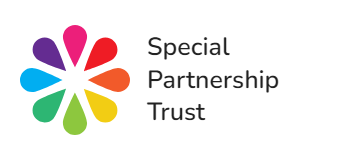Assessment and Outcomes
Assessment: Approaches and Methods
Assessment is an integral part of teaching and learning and is inextricably linked to our curriculum. It helps us to ensure that our teaching is appropriate. We use three broad overarching forms of assessment: day-to-day in-school formative assessment; in school summative assessment; and nationally standardised summative assessment.
In-school formative assessment:
Effective in-school formative assessment enables:
• Teachers to identify how pupils are performing on a continuing basis and to use this information to provide appropriate support or extension, evaluate teaching and plan future lessons to meet learner’s next steps in their learning journey.
• Pupils to measure their knowledge and understanding against learning objectives and identify the next steps in their learning; and receive feedback about progress.
• Parents / carers to gain a broad picture of where their child’s strengths and weaknesses lie, and what the next steps are in their learning.
Formative assessment is used to continually review learning and next steps. It involves teachers and TA’s giving feedback to pupils that relates to what they have achieved and the next steps in learning.
For pupils working within the pre-National Curriculum framework, we will make use of observations, work recorded to make formative assessments of pupil progress using an electronic system. Key learning statements within progress ladders are assessed to plan next steps in pupils learning journeys. Staff who work with these pupils work collaboratively to assess gather evidence and plan next steps.
For all pupils each topic starts with a pre-assessment task, the unit learning intentions, that are derived using the assessment information gathered from the pre-assessment task, alongside progress ladders, are used to inform the learning for pupils. Personal targets will also be added if relevant. Learning intentions/objectives and personal targets are annotated as the unit of work progresses; showing what has been achieved. Research shows (Education Endowment 2018) that feedback is a powerful tool and is an essential part of teaching and learning.
Feedback comes in a variety of ways both written and verbal:
• Pupil to Teacher/ TA
• Teacher/ TA to Pupil
• Self-assessment
• Peer-assessment
Pupils can reflect on their achievement measured against the learning intention or question set; this may be with faces to show whether they have achieved well or need more help – smiley, straight mouth, and sad, via the use of mini-white boards or direct questioning feedback. Pupils can show this physically using thumbs–up, down or sideways. This provides pupils an opportunity to reflect on their own learning and gives the adult working with them an insight into how they have felt about their learning and achievement. Pupils can also use a checklist to see how successful they have been to help make their self-assessment. Checking work for sense and accuracy also supports the development of independent learning and improvement skills.
Marking and Feedback
The more teachers comment on improvement and how pupils can achieve this, the more marking will allow for greater progression. Quality of lesson planning is a key factor in this process. Well set written tasks, which allow students to develop and extend their learning, will allow for quality marking and enable students to make best progress. Where relevant, comments should be linked to KS2 / KS3 school assessment or GCSE (or other) assessment criteria. Marking and feedback should also be consistent with the principles of Assessment for Learning (AfL):
• Ensuring students are at the centre of the process – enabling them to recognise how to make improvements.
• Based on shared learning objectives
• Regularly given.
• Accessible by all pupils to the level at which they are learning.
• Supportive of achievement in all its forms

